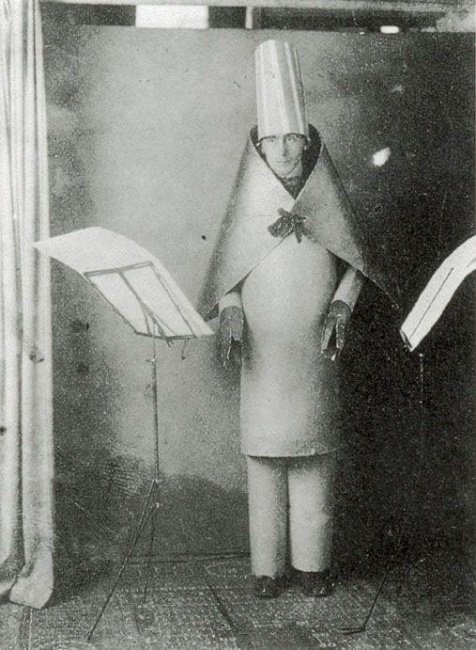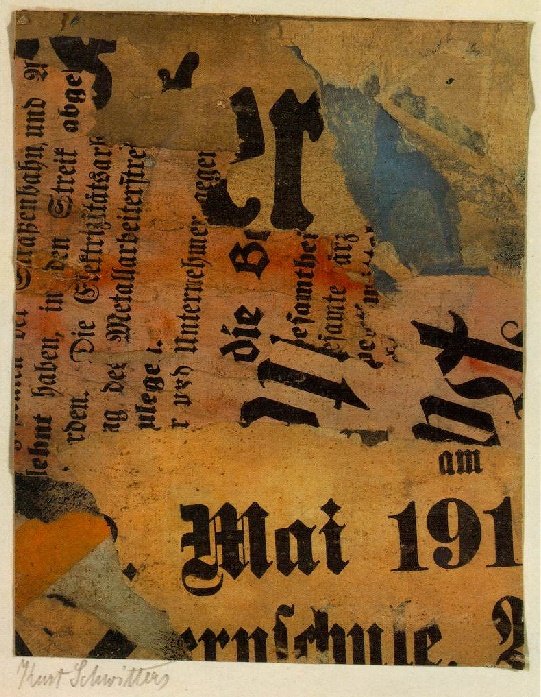Aquí la continuación de mi presentación del Dadaísmo, ese movimiento de vanguardia que ejerció un modo muy provocador de asumir el arte negándolo, y marcó, en gran medida, lo que se haría posteriormente. En esta segunda entrega (si estás interesado, puedes visitar el post anterior por este enlace) daré más información sobre su surgimiento y desarrollo y otros aspectos relacionados.
============
Here is the continuation of my presentation of Dadaism, that avant-garde movement that exercised a very provocative way of assuming art by denying it, and marked, to a great extent, what would be done later. In this second installment (if you are interested, you can visit the previous post by this link) I will give more information about its emergence and development and other related aspects.

Su aparición ocurrió en febrero de 1916 en Zurich (Suiza) en la inauguración del Café Voltaire, un café literario-musical abierto por el escritor alemán Hugo Ball y su esposa, la actriz Emmy Hennings. En ese lugar se dieron cita artistas de diferente procedencia (Suiza se había mantenido neutral en el conflicto bélico, y, por lo tanto, era punto de convergencia de una variada intelectualidad). Su principal figura fue Tristan Tzara, estudiante rumano de filosofía que se había dedicado a la poesía. Y lo acompañaron el pintor también rumano Marcel Janco, el pintor francés Jean Arp, el escritor alemán Richard Huelsenbeck, entre los principales participantes. Durante unos cinco años fue el epicentro de encuentros que juntaban la música (el jazz, sobre todo), las recitaciones de poemas simultáneos, sketches absurdos, en espectáculos de actitudes muy rebeldes en contra del arte y la literatura convencionales.
En dicho café se publicó el único número de una revista con el nombre del recinto, primer órgano del movimiento. Luego, en 1917, la revista Dada, en la que se incluyó –en su número 3, publicado en 1918– el primer manifiesto dadaísta (todos los siete manifiestos fueron escritos por Tristan Tzara).
De ese primer manifiesto (pueden leerlo completo aquí), citamos en el post anterior. Podemos agregar ahora:
Escribo este manifiesto para demostrar cómo se pueden llevar a cabo al mismo tiempo las acciones más contradictorias con un único y fresco aliento; estoy contra la acción y a favor de la contradicción continua, pero también estoy por la afirmación. No estoy ni por el pro ni por el contra y no quiero explicar a nadie por qué odio el sentido común.
(…)
Libertad: DADA, DADA, DADA, aullido de colores encrespados, encuentro de todos los contrarios y de todas las contradicciones, de todo motivo grotesco, de toda incoherencia: LA VIDA.

His appearance took place in February 1916 in Zurich (Switzerland) at the opening of the Café Voltaire, a literary-musical café opened by the German writer Hugo Ball and his wife, the actress Emmy Hennings. Artists of different origins gathered there (Switzerland had remained neutral in the war conflict, and, therefore, it was a convergence point of a varied intellectuality). Its main figure was Tristan Tzara, a Romanian student of philosophy who had devoted himself to poetry. And he was accompanied by the Romanian painter Marcel Janco, the French painter Jean Arp, the German writer Richard Huelsenbeck, among the main participants. For about five years it was the epicenter of meetings that brought together music (jazz, above all), simultaneous recitations of poems, absurd sketches, in shows of very rebellious attitudes against conventional art and literature.
The only issue of a magazine bearing the name of the venue, the first organ of the movement, was published in the café. Then, in 1917, the magazine Dada, in which was included -in its number 3, published in 1918- the first Dadaist manifesto (all the seven manifestos were written by Tristan Tzara).
From that first manifesto (you can read it in full here), we quoted in the previous post. We can now add:
I write this manifesto to show how the most contradictory actions can be carried out at the same time with a single, fresh breath; I am against action and for continuous contradiction, but I am also for affirmation. I am neither for the pro nor for the con and I don't want to explain to anyone why I hate common sense.
(...)
Freedom: DADA, DADA, DADA, DADA, howl of fierce colors, meeting of all opposites and all contradictions, of all grotesque motives, of all incoherence: LIFE.

El nihilismo (negación de todo, para decirlo fácilmente) fue una actitud que tomó mucha fuerza en la Europa de finales del siglo XIX y comienzos del XX, como una reacción –a veces desmesurada- en contra de la mediocridad reinante y las acciones irracionales (la guerra, fue un principal motivo) de los países, gobiernos y/o sectores de poder.
El Dadaísmo fue una de las expresiones más vehementes de ese nihilismo, constituyéndose contradictoriamente en una tendencia antiarte, aunque sus participantes hicieron arte. Lo importante de su existencia estuvo en el cuestionamiento de patrones existentes que se habían convertido en una especie de corsé para la libertad creativa, y su acción conmovedora de las ideas y las prácticas artísticas.
Tuvo valiosas manifestaciones en Francia, particularmente en París entre 1920-1922 y en Alemania a partir de 1918, con la influencia de Richard Huelsenbeck, que venía del grupo de Zurich, el poeta austríaco Raoul Hausmann y el pintor alemán Kurt Schwitters, entre otros, que conformaron un club Dada.
Hubo un importantísimo antecedente o manifestación casi contemporánea al Dadaísmo originado en Zurich que tuvo lugar en Estados Unidos. Por su relevancia la abordaremos en una próxima entrega.
============
Nihilism (negation of everything, to put it easily) was an attitude that took a lot of strength in Europe in the late nineteenth and early twentieth centuries, as a reaction -sometimes excessive- against the prevailing mediocrity and irrational actions (war was a main reason) of countries, governments and / or sectors of power.
Dadaism was one of the most vehement expressions of that nihilism, contradictorily constituting an anti-art tendency, although its participants made art. What was important in its existence was the questioning of existing patterns that had become a kind of corset for creative freedom, and its moving action of ideas and artistic practices.
It had important manifestations in France, particularly in Paris between 1920-1922 and in Germany from 1918 with the influence of Richard Huelsenbeck, who came from the Zurich group, the Austrian poet Raoul Hausmann and the German painter Kurt Schwitters, among others, who formed a Dada club.
There was a very important antecedent or almost contemporary manifestation to Dadaism originated in Zurich that took place in the United States. Due to its relevance, we will deal with it in a future installment.
Referencias | References:
Pierre, José (1968). El Futurismo y el Dadaísmo. España: Ediciones Aguilar.
Torre, Guillermo de (1974). Historia de las literauras de vanguardia (Vol. 1). España: Editorial Guadarrama.
https://es.wikipedia.org/wiki/Dada%C3%ADsmo
https://en.wikipedia.org/wiki/Dada
https://www.thelightingmind.com/los-manifiestos-dada/
Continúa... | To be continued

Gracias por su lectura | Thank you for reading.



The rewards earned on this comment will go directly to the person sharing the post on Twitter as long as they are registered with @poshtoken. Sign up at https://hiveposh.com.
Hoy más que nunca necesitamos dadaísmo en nuestras redes sociales, lluvias de letras, explosiones de poesía y más, mucho más... romper todos los esquemas y los lugares comunes en los que todos andan escribiendo.
Gracias por tu visita y comentario, @alasia. Siempre será necesario remover y cuestionar lo existente, para salir de los endurecimientos y estancamientos. Saludos.